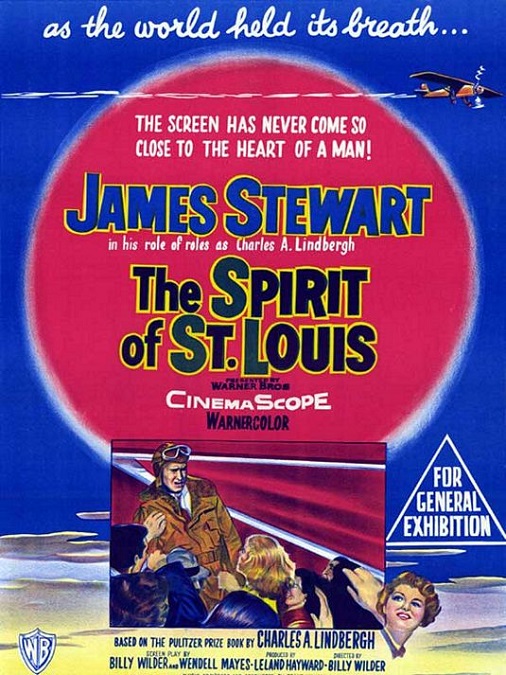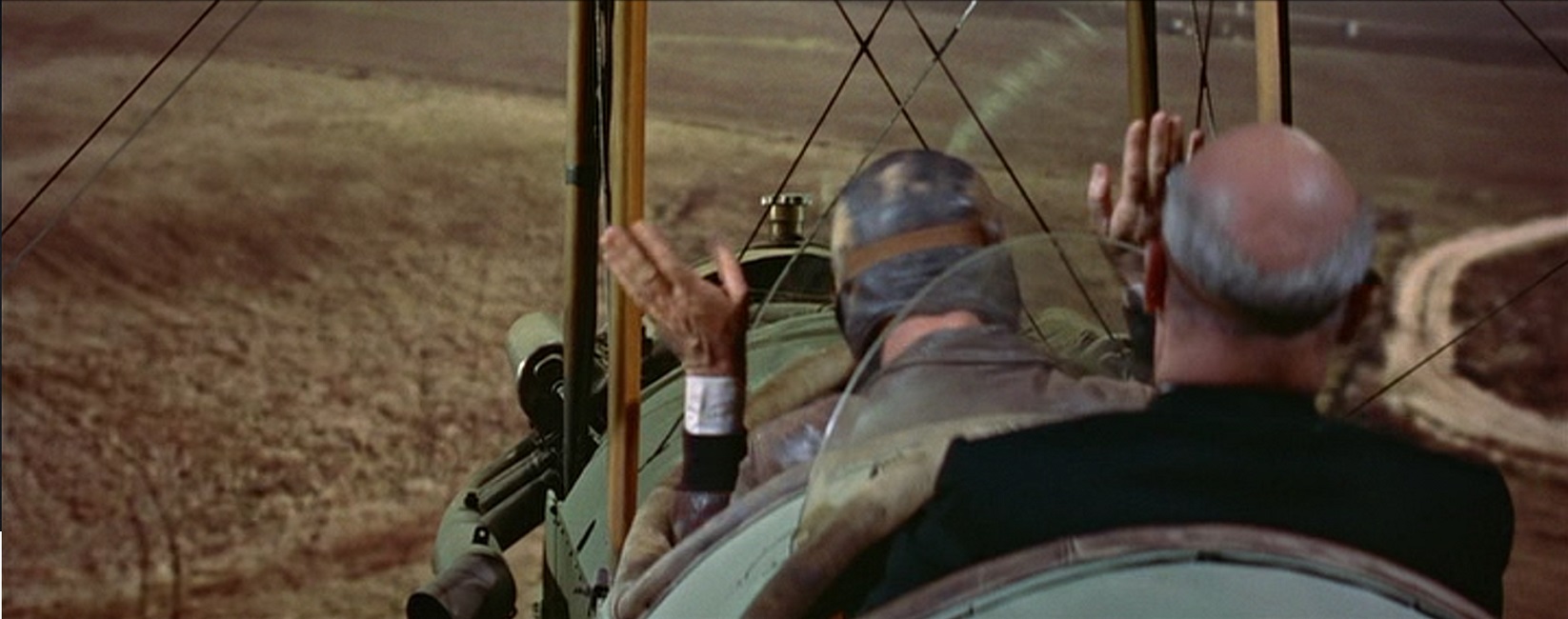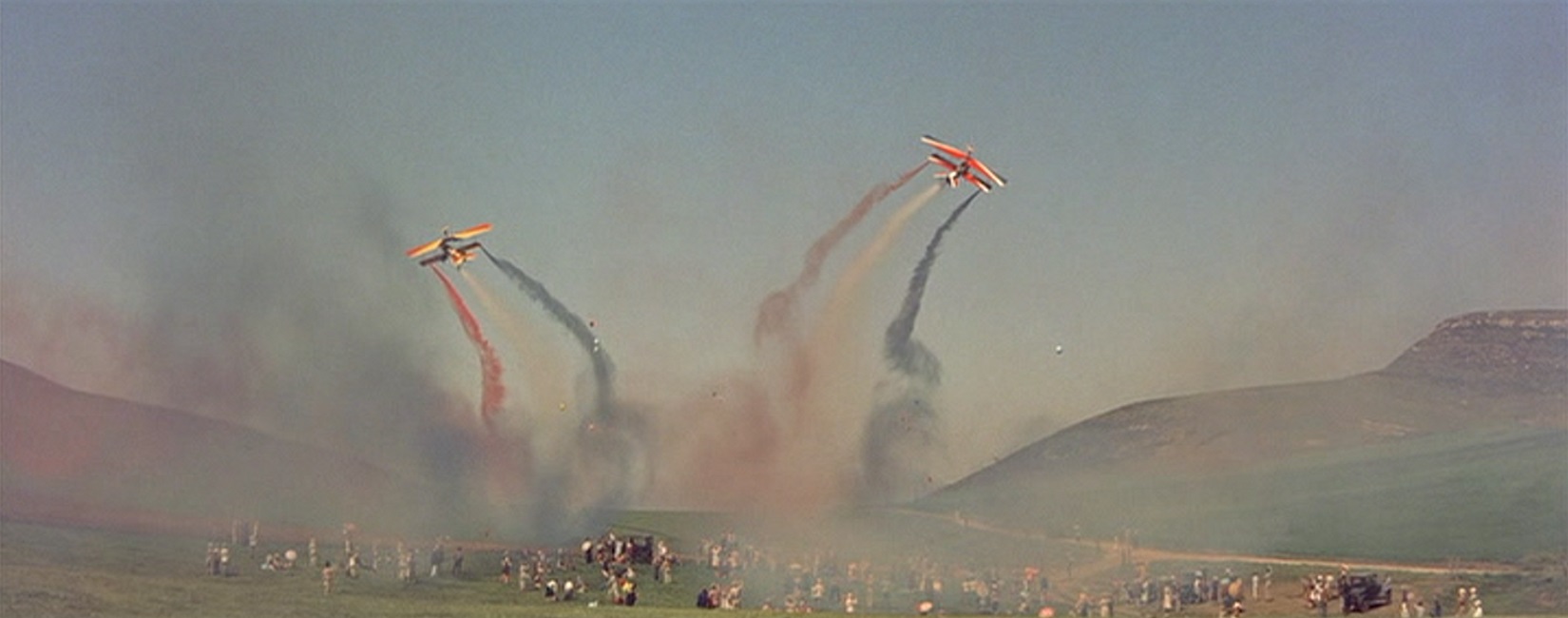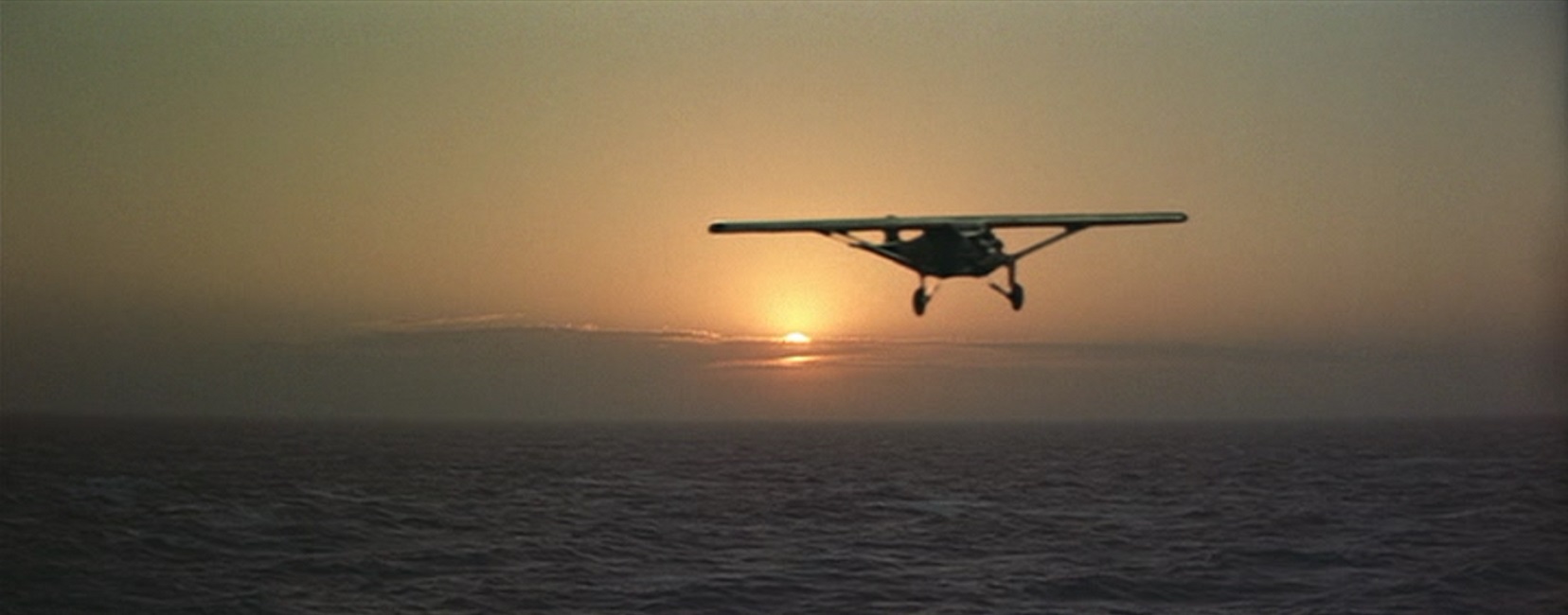



The Spirit of St. Louis – 1957
 Here is another example of a movie that, as far as I could tell, just didn’t have very much reason to be nominated for the Best Special Effects category. The movie was a dramatization of the events leading up to the first trans-Atlantic flight made by Charles Lindbergh. It was a drama, and really, nothing more.
Here is another example of a movie that, as far as I could tell, just didn’t have very much reason to be nominated for the Best Special Effects category. The movie was a dramatization of the events leading up to the first trans-Atlantic flight made by Charles Lindbergh. It was a drama, and really, nothing more.
So what did the film have going for it? Well, there was some skillful stunt flying, a couple of physical stunts, a parachute landing, and some big, wide cinematic shots that were actually the responsibility of the cinematographer and the director. These shots were wonderful to see, but I wouldn’t call them special effects. There were also a few rear-projection shots that were only interesting because they must have taken skilled stunt pilots to film.
There just wasn’t much opportunity in the plot for visual effects. The stunt flying was really the only significant reason I can think of to warrant the nomination. So I’ll comment on that for a moment. There was one short sequence which showed a couple of biplanes performing at an air-show, each with red, white, and blue smoke trailing behind them. They weaved through the air, crossing each other’s paths, making smoke patterns in the sky. Part of the sequence was a stunt where men actually walked on the wings of flying planes. That was interesting, but very brief.
Then there were several scenes which showed us take-offs and landings in difficult weather conditions. The Spirit of St. Louis of course, was the featured airplane, and its initial take-off on a wet and muddy runway made for a tense scene. Unfortunately, one of the problems I had was inherent in the plot of the film. It was history. We know that Lindbergh and his innovative airplane survived all their challenges. So whenever his plane seemed to be in trouble, it was interesting to see the aviator’s dramatic human struggles, but there was always that little bit of viewer omniscience taking away from the illusion of danger. The drama was fine, but a part of me always knew he wasn’t going to crash.
And that brings me to an interesting sequence in which the outside of the Spirit of St. Louis became frozen and iced over. In order to prevent the plane’s engine from stalling, Lindbergh flies to a lower altitude. The ice quickly melts and breaks away from the craft in small wet chunks. The effect looked easy to accomplish.
And finally, there was the climax of the film, the scene in which Lindbergh approaches his destination in Paris. The aerial shots of the beautiful city, with the Eifel Tower being prominently displayed, were very nice. As he came in for his landing, a camera was fastened to the underbelly of the airplane, so it was an interesting way to see the end of his journey. And that. Unfortunately, sums it all up for me. It was all very nice, but not terribly inventive, innovative, or interesting.